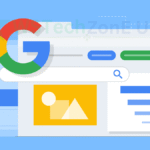1. Why you applied in SEO?
I applied in SEO because I enjoy learning how websites appear on top of Google search. For example, once I searched for ‘best shoes near me,’ and I noticed some websites always came first. That made me curious about how Google decides which sites go on top. This curiosity pushed me to learn SEO. I also like that SEO is always changing — Google updates, new tools, and new strategies — so it keeps me learning and growing. I see SEO as a long-term career because every business now needs online visibility, and SEO helps bring traffic without paying for ads. That’s why I feel motivated to build my career in SEO.
2. What is the meaning of sitemap?
- Definition: A sitemap is like a roadmap of a website. It tells search engines which pages are important and how they are connected. This helps Google and other search engines to crawl and index the website more effectively.
- Example: For example, if a website is like a big shopping mall, then the sitemap is like the directory board at the entrance that shows where each shop is located. Without it, visitors may miss some shops, and in the same way, search engines may miss some pages.
- Types: XML Sitemap: Created for search engines to understand website structure. HTML Sitemap: Created for users to easily navigate through the site.
- Importance: With a sitemap, search engines can quickly find and index all key pages. Without it, some important pages might not appear in search results, which can reduce traffic.
3. How to check sitemap?
- Definition: To check a sitemap, we usually look at the website’s URL. Most sitemaps are found at common locations such as:
- com/sitemap.xml
- com/sitemap_index.xml Another option is to check the robots.txt file at
example.com/robots.txt, because many websites mention their sitemap link there.
- Example: For example, if I want to check the sitemap of a blog site, I can type the website name with /sitemap.xml at the end. If the file opens and shows a list of URLs, that means the sitemap is working.
- Tools / Methods: Google Search Console can be used to submit and verify the sitemap. It shows whether the sitemap is valid and how many pages are indexed. SEO tools like Screaming Frog or Ahrefs can also detect the sitemap automatically.
- Why it Matters: Checking a sitemap is important because it confirms that search engines can see all the important pages. If the sitemap has errors or is missing, some pages may not appear in Google search results.
4. Why do we do On-Page SEO and what is it for?
- Definition: On-Page SEO means optimizing the elements inside a website so that search engines and users both can understand it better. This includes things like titles, meta descriptions, headings, keywords, images, and content quality.
- Why We Do On-Page SEO: We do On-Page SEO to improve a page’s visibility and ranking in search results, enhance user experience, and target specific keywords to bring in relevant traffic.
- Example: For example, if I have a page selling “organic plants,” I will use the keyword “organic plants” in the title, URL, headings, and content. I will also add alt text in images and write a good meta description.
- Result: On-Page SEO ensures that both users and search engines easily understand the content, which improves ranking, traffic, and overall performance of the website.
5. Tell me the On-Page SEO elements.
- Definition: On-Page SEO elements are the parts of a website that we optimize directly inside the page to improve ranking and user experience.
- Main On-Page Elements:
- Title Tag: The main title of the page shown in search results.
- Meta Description: A short summary under the title in search results.
- URL Structure: Clean and keyword-friendly links (e.g., com/organic-plants).
- Headings (H1, H2, H3…): Organize content and highlight important topics.
- Content Quality: Relevant, unique, and keyword-optimized text.
- Image Optimization: Alt text, file size, and proper naming of images.
- Internal Linking: Linking one page of the website to another for better navigation.
- Mobile Friendliness: Making sure the website looks good and works on phones.
- Page Speed: Fast loading time for better user experience.
- Schema Markup: Extra code that helps search engines understand details like reviews, FAQs, or products.
- Example: For example, if I have a blog on “Digital Marketing Tips,” my title tag will be “10 Digital Marketing Tips for Beginners,” the URL will be com/digital-marketing-tips, headings will break down each tip, and I’ll add images with alt text like “Digital Marketing Infographic.”
- Result: By optimizing these elements, the page becomes easier for search engines to crawl and more engaging for users, which leads to better rankings and higher traffic.

6. What is H1 for?
- Definition: The H1 tag is the main heading of a webpage. It tells search engines and users what the page is mainly about. Every page should normally have only one H1.
- Why We Use H1: It defines the main topic of the page, acts as an SEO signal for Google to understand content relevance, and gives visitors a clear idea of what they are reading, improving user experience.
- Example: If my page is about “SEO Basics,” then the H1 could be: <h1>Beginner’s Guide to SEO Basics</h1>. This tells both Google and readers that the page will explain SEO basics.
- Best Practices: Use only one H1 per page, add the main keyword inside the H1, and make it clear, short, and descriptive.
- Result: Using H1 properly improves clarity for users, helps Google understand the page content, and supports better rankings in search results.
7. What is robots.txt?
- Definition: The robots.txt file is a simple text file placed in the root folder of a website. It gives instructions to search engine crawlers (like Googlebot) about which pages or sections of the site should be crawled and which should be avoided.
- Why We Use robots.txt: To control crawling, save crawl budget, and block private or unnecessary sections of the website from being indexed.
- Example: If I don’t want Google to crawl the admin folder of my website, I can write this in robots.txt: User-agent: * Disallow: /admin/. This tells all search engines not to crawl the /admin/ section.
- Result: With a properly written robots.txt file, we can guide search engines to crawl only the useful parts of a website, which improves efficiency and prevents unwanted pages from showing in search results.
8. If a robots.txt file is already added to the website, what action will you take?
- My Action Steps:
- Check Location: First, I will check if the file is placed correctly at com/robots.txt.
- Review Rules: I will carefully read the file to see which pages or folders are allowed or disallowed for crawling.
- Verify Important Pages: I’ll make sure that important pages like homepage, product pages, and service pages are not blocked in robots.txt.
- Check Sitemap Link: I’ll see if the sitemap is added at the end of the robots.txt file like: Sitemap: https://example.com/sitemap.xml. If it’s missing, I will add it.
- Test in Google Search Console: I’ll test the robots.txt file in Google Search Console to confirm that Googlebot is able to crawl the important areas of the site.
- Fix Mistakes if Found: If unnecessary pages (like /admin/ or /login/) are not blocked, I’ll block them. If important pages are accidentally blocked, I’ll remove those rules.
- Result: By checking and updating the robots.txt file, I will ensure search engines crawl the right pages, save crawl budget, and improve SEO performance.
9. What is Webmaster, and what details do we send there?
- Definition: Google Webmaster Tools (now called Google Search Console) is a free tool provided by Google. It helps website owners and SEO specialists monitor how their website appears in Google search, track performance, and fix issues.
- What Details We Send to Webmaster / Search Console:
- Sitemap Submission: We submit the XML sitemap so Google can easily crawl all important pages.
- txt Checking: To make sure no important page is blocked.
- URL Inspection: To request indexing for new or updated pages.
- Site Ownership Verification: We send details like HTML file, meta tag, or DNS record to prove that we own the website.
- Example: If I launch a new blog page on “Digital Marketing Tips,” I will add the page to the sitemap, submit the updated sitemap in Webmaster Tools, and use the URL Inspection tool to request Google to index that page quickly.
- Result: By using Webmaster / Search Console correctly, I make sure Google fully understands my site, crawls important pages, and shows them in search results without issues.
10. What is the difference between Crawling and Indexing?
- Crawling (Step 1): Crawling means when search engine bots (like Googlebot) visit and scan the pages of a website to discover content. Bots go through links, sitemaps, and robots.txt to find pages.
- Indexing (Step 2): Indexing happens after crawling. It means Google takes the information it crawled and stores it in its database so the page can appear in search results.
- Key Difference: Crawling = Discovery (Google finds the page). Indexing = Storage & Listing (Google saves it in its database so users can find it).
- Simple Example: Think of Google as a library: Crawling is when the librarian visits a new book and reads through it. Indexing is when the librarian decides to keep that book on the shelf with a label, so readers can find it later.
11. What is latest Google algorithm? What is an algorithm?
- Definition of a Google Algorithm: A Google algorithm is a set of rules and processes that Google uses to decide which web pages show up in search results and in what order. These rules consider factors like content quality, relevance to the searcher’s query, site performance, and user experience.
- Latest Update: The most recent major change is the June 2025 Core Update, which was completed around July 17, 2025. This update was designed to “better surface relevant, satisfying content for searchers from all types of sites.”
- Result: After the update, there was noticeable ranking volatility, with some sites improving, others declining, and some recovering from earlier hits.
12 What is keyword density?
- Definition: Keyword density means how many times a keyword appears in your content compared to the total number of words on that page. It’s usually shown as a percentage.
- Example: If a blog post has 1,000 words and the keyword “Digital Marketing” appears 10 times, then the keyword density is: (10÷1000)×100 = 1%
- Importance: It helps search engines understand what your content is about. However, too much keyword use (called keyword stuffing) can harm ranking. A natural flow of keywords is better for both Google and readers.
- Best Practice: Keep density around 1% to 2% and focus more on content quality and using related words (LSI keywords), rather than just repeating the same word.
13 What is the meaning of KD increasing and decreasing?
- Definition of KD: KD means Keyword Density. It tells how often a keyword appears on a page compared to the total number of words.
- KD Increasing: When KD increases, it means the keyword is being used more times in the content. Too much of an increase may look like keyword stuffing, which is bad for SEO.
- KD Decreasing: When KD decreases, it means the keyword is being used less often in the content. If it decreases too much, Google may not clearly understand the page topic.
- Best Balance: The goal is to keep KD natural (around 1%-2%) so Google understands the topic but the content still reads smoothly for users.
14. What do you mean by Website Audit?
- Definition: A website audit means a complete checkup of a website to find problems and opportunities that can improve SEO, performance, and user experience.
- What It Includes:
- Technical SEO Audit: Checking site speed, mobile-friendliness, broken links, crawlability, robots.txt, and sitemap.
- On-Page SEO Audit: Reviewing title tags, meta descriptions, headings (H1, H2), keyword usage, and content quality.
- Off-Page SEO Audit: Analyzing backlinks, domain authority, spammy links, and social presence.
- User Experience (UX) Audit: Looking at design, navigation, and how easy the site is for visitors.
- Example: Suppose a website is not ranking. In a website audit, I may find that the site has slow loading speed, missing meta descriptions, and broken links. After fixing these, the site will perform better on Google and provide a smoother experience for users.
15. Can you define Keyword Difficulty?
- Definition: Keyword Difficulty (KD) means how hard or easy it is to rank for a specific keyword in search engines. It shows the competition level.
- How It Works:
- High KD: Hard to rank, because big websites or strong competitors are already targeting that keyword.
- Low KD: Easy to rank, because fewer or weaker websites are targeting that keyword.
- Example: Keyword “Shoes” has a very high KD. The keyword “Best running shoes for flat feet 2025” has a lower KD.
- Why Important in SEO: It helps in choosing the right keywords for a website. A new website should target low KD keywords to get traffic faster, while established websites with high authority can target high KD keywords.
16. What is a 5xx issue or problem in SEO?
- Definition: 5xx problems are server-side errors. It means when a user or Googlebot tries to open a page, the server fails to respond properly.
- Types of 5xx Errors:
- 500 – Internal Server Error
- 502 – Bad Gateway
- 503 – Service Unavailable
- 504 – Gateway Timeout
- Effect on SEO: Googlebot cannot crawl the page, and pages may drop from the index if errors stay for a long time. It also leads to a bad user experience.
- Example: Suppose a website gets heavy traffic and the server goes down, showing a 503 error. Users can’t open it, and Googlebot also can’t crawl. This harms SEO if it happens often.
17. If a website has 5xx errors, how will you find them and what action will you take?
- How to Find 5xx Errors:
- Google Search Console: The Coverage Report shows all crawl errors, including 5xx.
- SEO Tools: Tools like Screaming Frog, Ahrefs, and SEMrush can crawl the website and list all 5xx issues.
- Server Logs: Checking server log files can show when and where the 5xx errors occurred.
- Manual Check: Opening the URL in the browser to confirm if it shows a server error.
- Actions I Take:
- Check Server Health: I contact the hosting provider or check server resources (CPU, memory).
- Fix Overload Issues: If traffic is high, I might upgrade the server or use a CDN.
- Review Code / Plugins: I check if coding errors or faulty plugins are causing the 500 errors.
- Temporary Errors (503): If the error is for maintenance, I set a proper “Retry-After” header so Google knows it’s temporary.
- Result: By checking and updating, I can ensure that the website is accessible to both users and search engines, preventing harm to its SEO performance.
18. What is a 4xx error?
- Definition: 4xx errors are client-side errors. It means the browser (user or Googlebot) sends a request, but the server understands it and either refuses the request or can’t find the page.
- Common Types of 4xx Errors:
- 404 – Not Found (most common)
- 410 – Gone (deleted permanently)
- Effect on SEO: If important pages return 404, they drop from Google’s index. Broken links provide a bad user experience, and too many 4xx errors can cause Googlebot to waste its crawl budget.
- Example: If a page is deleted, but a link to it still exists, users and Googlebot will see a 404 Not Found error. In SEO, we fix this by redirecting (301) to a correct or similar page.
19. What is PA and DA in SEO?
- Definition:
- DA (Domain Authority): A score developed by Moz that shows the overall authority of a domain. It’s based on factors like backlinks, content quality, and trustworthiness, with a score from 1 to 100.
- PA (Page Authority): A similar score that measures the authority of a single webpage instead of the whole domain.
- Example: If example.com has a DA of 60, a blog post on that domain might have a PA of 40. This means the overall website is strong, but that single page is slightly less powerful.
- Why Important in SEO: Websites with high DA are more likely to rank better. High PA pages have a better chance of ranking for specific keywords.
20. Why I am paid you 80k PKR Per month?
- Skills & Knowledge: I have a strong command of SEO, including On-page, Off-page, and Technical SEO. I know how to improve rankings, optimize websites, fix technical errors, and increase organic traffic.
- Practical Experience: I have practical experience working on websites where I improved keyword ranking, generated quality backlinks, increased PA/DA, and resolved technical issues like 4xx/5xx errors.
- Direct Business Benefit: Your investment in me will bring returns through organic traffic, lead generation, and better online visibility, which will directly increase your sales and brand value.
- Commitment & Growth: I want to grow with the company. My focus will be on long-term improvements in SEO, so your business gets continuous benefits.
- Example: For example, if your website is not ranking on the first page, I will optimize it with proper keywords, backlinks, and technical fixes so that it reaches top positions. This will attract more customers, which means your business earns much more than 80k monthly just from my efforts.




